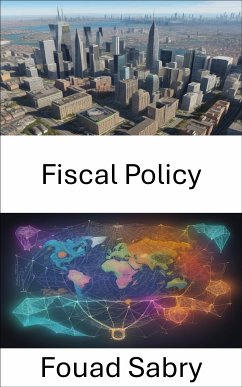What is Fiscal Policy
In economics and political science, fiscal policy is the use of government revenue collection and expenditure to influence a country's economy. The use of government revenue expenditures to influence macroeconomic variables developed in reaction to the Great Depression of the 1930s, when the previous laissez-faire approach to economic management became unworkable. Fiscal policy is based on the theories of the British economist John Maynard Keynes, whose Keynesian economics theorised that government changes in the levels of taxation and government spending influence aggregate demand and the level of economic activity. Fiscal and monetary policy are the key strategies used by a country's government and central bank to advance its economic objectives. The combination of these policies enables these authorities to target inflation and to increase employment. In modern economies, inflation is conventionally considered "healthy" in the range of 2%-3%. Additionally, it is designed to try to keep GDP growth at 2%-3% percent and the unemployment rate near the natural unemployment rate of 4%-5%. This implies that fiscal policy is used to stabilise the economy over the course of the business cycle.
How you will benefit
(I) Insights, and validations about the following topics:
Chapter 1: Fiscal policy
Chapter 2: Keynesian economics
Chapter 3: Macroeconomics
Chapter 4: Recession
Chapter 5: Stagflation
Chapter 6: Fiscal multiplier
Chapter 7: Economic policy
Chapter 8: Deficit spending
Chapter 9: Government budget balance
Chapter 10: Tax cut
Chapter 11: Austerity
Chapter 12: Crowding out (economics)
Chapter 13: Balanced budget
Chapter 14: Debt monetization
Chapter 15: Modern monetary theory
Chapter 16: 2008-2009 Keynesian resurgence
Chapter 17: Treasury view
Chapter 18: Stimulus (economics)
Chapter 19: Abenomics
Chapter 20: Balance sheet recession
Chapter 21: Crowding-in effect
(II) Answering the public top questions about fiscal policy.
(III) Real world examples for the usage of fiscal policy in many fields.
Who this book is for
Professionals, undergraduate and graduate students, enthusiasts, hobbyists, and those who want to go beyond basic knowledge or information for any kind of Fiscal Policy.
In economics and political science, fiscal policy is the use of government revenue collection and expenditure to influence a country's economy. The use of government revenue expenditures to influence macroeconomic variables developed in reaction to the Great Depression of the 1930s, when the previous laissez-faire approach to economic management became unworkable. Fiscal policy is based on the theories of the British economist John Maynard Keynes, whose Keynesian economics theorised that government changes in the levels of taxation and government spending influence aggregate demand and the level of economic activity. Fiscal and monetary policy are the key strategies used by a country's government and central bank to advance its economic objectives. The combination of these policies enables these authorities to target inflation and to increase employment. In modern economies, inflation is conventionally considered "healthy" in the range of 2%-3%. Additionally, it is designed to try to keep GDP growth at 2%-3% percent and the unemployment rate near the natural unemployment rate of 4%-5%. This implies that fiscal policy is used to stabilise the economy over the course of the business cycle.
How you will benefit
(I) Insights, and validations about the following topics:
Chapter 1: Fiscal policy
Chapter 2: Keynesian economics
Chapter 3: Macroeconomics
Chapter 4: Recession
Chapter 5: Stagflation
Chapter 6: Fiscal multiplier
Chapter 7: Economic policy
Chapter 8: Deficit spending
Chapter 9: Government budget balance
Chapter 10: Tax cut
Chapter 11: Austerity
Chapter 12: Crowding out (economics)
Chapter 13: Balanced budget
Chapter 14: Debt monetization
Chapter 15: Modern monetary theory
Chapter 16: 2008-2009 Keynesian resurgence
Chapter 17: Treasury view
Chapter 18: Stimulus (economics)
Chapter 19: Abenomics
Chapter 20: Balance sheet recession
Chapter 21: Crowding-in effect
(II) Answering the public top questions about fiscal policy.
(III) Real world examples for the usage of fiscal policy in many fields.
Who this book is for
Professionals, undergraduate and graduate students, enthusiasts, hobbyists, and those who want to go beyond basic knowledge or information for any kind of Fiscal Policy.
Dieser Download kann aus rechtlichen Gründen nur mit Rechnungsadresse in A, B, BG, CY, CZ, D, DK, EW, E, FIN, F, GR, H, IRL, I, LT, L, LR, M, NL, PL, P, R, S, SLO, SK ausgeliefert werden.


